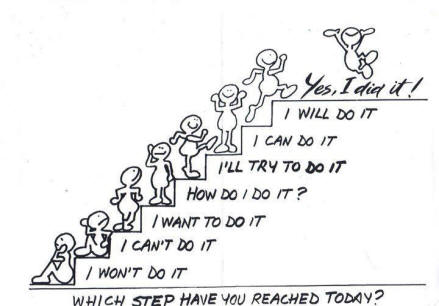A Caregiver’s Guide & Resources
My brain and heart dreams up commitments my body can’t keep! In the past, I provided care to sick or elderly friends and family members for many years. I took care of my mother for 12 years and my grandmother for another 10 years. For me this proved to be exceptionally challenging.
Many times, while providing exceedingly loving and compassionate care, I depleted my “sanity reserve bank account” and fell into self-destructive patterns for myself.

My thinking patterns became very distorted—I loved others so completely that I would do anything for them, but when it came to me, I wished God had made me a robot so that I would have NO needs. Having needs was inconvenient. If I was supposed to be of “infinite helping support,” then why did God make me with needs?

I finally realized that I had over-commitment to others and under-commitment to me. I saw the effect of this pattern on my emotions and life.
Clues that I was becoming overwhelmed by my caregiving were that I started to get grumpy and resentful towards those I was caring for. I felt like I was “dial a disaster, dial Bob! I’ve got a problem and I need you to fix it!” It seemed that the only time the family member called me up was to request something of me, or to tell me what I had done wrong. At that time it felt like my caregiving was done out of obligation and not freely given–I felt drained–and I had no more to give.
I felt torn apart: in that I was SO emotionally committed to my loved one and would do ANYTHING for them…and I had reached my limit of providing care for them.

From hindsight, I would have talked with those family members and had an agreement up front that IN THE FUTURE when their need for additional care had exceeded my ability to provide it (that I was mentally, physically, and emotionally being harmed) that I would let them know. At that time they would need to go to an assisted living facility or find some other type of help. 
I would have had these steps already planned out and communicated right at the start to avoid problems later on. I learned that if in my old age anyone was willing to offer assistance to me for my care, that I wanted to respect their natural limits.
I would want to acknowledge that their love and support has natural and healthy limits. I would want to let them know that when “it’s THAT time,” just let me know, and I will understand. They KNOW that I love them and myself, as well.
Aging Matters Documentaries: End of life Decisions, Caregiving, Economics of Aging, The New Old Age, Aging In Place, Healthy Aging, Living with Alzheimer’s and Dementia, and other superb topics are discussed. They provide perspective and life tools to use. Their website is: www.wnpt.org/agingmatters/home/

Additional Resources
According to the American Psychological Association, about 20% of seniors 65 and older meet the criteria for some kind of mental disorder. They also found that this age group is significantly less likely to receive mental health treatment, typically sticking to primary care doctors for all their needs.
While there is no substitute for seeing a mental health professional, it’s important for seniors to have access to the most current, comprehensive information about their mental health. Check out: http://www.balancedweightmanagement.com/Articles.htm#Seeking_Support_and_Counseling
Caregiver’s Guide to Understanding Dementia Behaviors
The Benefits of Cooking with Alzheimer’s: A Caregiver’s Guide
Six Things Seniors Can Do To Improve Memory
Preparing Your Home for a Loved One with Alzheimer’s: A Caregiver’s Guide
10 Easy Ways Seniors Can Boost Their Mental Health and Well-Being
Eating for Your Brain as a Senior
Overcoming The Loss Of A Child Without Drugs Or Alcohol — A Parent’s Guide
Mourning A Parent or Spouse’s Death
Promoting Mental Health at Home: How to Design the Perfect Meditation Room at Home
Newsweek Magazine has a wonderful article about A Guide for Caregivers and explores Caregiving & Alzheimer’s: a PDF file: Newsweek A Guide for Caregivers-MSNBC.com.pdf
See below the extremely helpful resource, COPING WITH CAREGIVING.pdf which shares many practical insights about how to manage stress when caring for loved ones. Discover below many other essential resources.

One of the great joys and blessings in life is being able to share our talents and gifts with our larger community—as volunteers. Again for me, this area has time and again caused me problems. I want to make a difference in my spiritual group, dietetic community, neighborhood, and the world at large—but my diaries have shown me the harmful effects of what happens when I get out of balance. I become compulsive, cranky, controlling, reactive, depressed, and physically, mentally, and emotionally ill.
What’s your experience with this area? It you find that the topic of providing care to a loved one challenging, perhaps see below for ideas on how to manage this matter. Also visit: Bob’s Story: Balance In Life.
Many clients I see and friends that I know have experienced the overwhelming stresses of providing TLC for their loved ones. More that 20 million households contain Americans who look after loved ones. While caregiving can offer enormous rewards–providing a sense of fulfillment, deepening lifelong loves–research increasingly links it to deleterious health effects, including a weakened immune system, depression and even premature death.
There are ways to relieve the burden. Support groups offer lifelines out of isolation. Adult day-care programs provide respite. Regular exercise lowers blood pressure and reduces stress and depression. Taking time for healthful eating provides essential fuel for the body. Most important of all: caregivers must look after themselves–without their own good health, their loved ones will suffer, too.
Don’t forget “care for the caregiver” by noting how our daily lifestyle choices effect how the caregiver feels too. For additional helpful insights consider visiting:
EXPLORE 2017 CELEBRATE STEPS TO VIBRANT AGING PowerPoint

A friend recently shared some insight about aging: “I spent my younger years doing what I was told to, my adult years doing what I had to… My golden years are for what I want to do!”
Indeed, I have a friend who living proof that retirement doesn’t have to mean sitting around and watching time pass. They are involved in several clubs, they golf at least once a week, and takes their son on outings every chance they get. They even inspired several other friends to get more active!
I thought I’d try to spread that inspiration even further by sharing some senior resources about making the most of the golden years.
Retirement: The Payoffs of an Active Lifestyle
Transportation Options for Seniors Who Don’t Drive
How Playing a Musical Instrument — at Any Age — is Good for Your Health
The Senior’s Guide to Becoming a Real Estate Agent in Their Golden Years
9 Things You Didn’t Know About Dating for Seniors
How to Love Our Adult Children with Purpose
Identifying and Stopping Opioid Abuse in Adult Children
How to Follow Your Dream and Spend Your Retirement Traveling the World
Aging in Place with a Little Help from Roommates, Neighbors, and Teenagers
5 Communities That Will Change Your View of Independent Living
Retirement doesn’t have to just be about stopping work… It can be about starting the fun!
Resources shared by Marie Villeza http://elderimpact.org/
How to Manage Stress When Caring For Chronically Ill or Elderly Relatives
Powerful tools for Caregivers: Powerful Tools for Caregivers.org http://www.powerfultoolsforcaregivers.org/about/ A terrific comprehensive workbook and class series.
A Pacific Northwest Extension Publication. This excellent resource that is packed with lots of really helpful information. It can be downloaded and printed off for free.
For the PDF version of this excellent book, click on: COPING WITH CAREGIVING.pdf
Found at: http://extension.oregonstate.edu/catalog/details.php?search=coping+with+caregiving

There is a great program that has started around the country called: “Program of All-Inclusive Care or the Elderly” or PACE- It is a pretty amazing program that offers a way for fragile elders to stay in the community, has healthcare and many social services.
Check out the Eldercare ABC Blog with many important topics: http://eldercareabcblog.com/pace-programs-an-important-senior-care-resource/
SSC currently serves a 34-zip code area and has two sites. The mission of SSC is to:
- Provide high quality care and services to its participants
- Take steps to keep participants as healthy and independent as possible
- Prevent premature nursing home placement
Comprehensive, coordinated care is a key part of Sutter SeniorCare. Participants receive a broad range of services including all benefits provided by Medicare and Medi-Cal and more. Most care is provided at SSC centers by an interdisciplinary team, which includes physicians, nurses, social workers, rehabilitation therapists and others.
How can we help you care for your parents? Visit www.caring.com for many terrific topics. Check out: Health A-Z, In-home care, Money and Legal matters, Caregiver Wellness, Senior Living Directory and much more!!
Elder Abuse: http://www.injury-settlement-guide.com/elder-abuse-and-neglect.html This website provides an overview of elder abuse, the types of, where, and why it occurs and actions that can be done once, and while it is occurring. It provides links to many resources.
Gift From Within (www.giftfromwithin.org) a non-profit organization is dedicated to those who suffer post-traumatic stress disorder (PTSD), those at risk for PTSD, and those who care for traumatized individuals. GFW helps everyone with PTSD by sharing ideas, improving morale, and reducing the stigma of the diagnosis and its treatment. We have articles written by authorities in the field, poetry and art gallery for trauma survivors, peer support pal network, personal coping and inspirational stories, a Q&A, videos, book reviews, list of retreats for survivors, global list of trauma survivor support groups, and other educational materials and resources.
Some of our articles include: “The Art and Science of Caring for Others without Forgetting Self-Care”; Trauma Addiction: Safety and Stabilization for the Addicted Survivor of Trauma; Life After Breast Cancer: Surviving & Thriving; “Exposure To A Traumatic Event Does Not Automatically Put A Person On A Path To Develop PTSD: The Importance of Protective Factors To Promote Resiliency.”; Latinas in Pursuit of Healing: Cultural Implications for Counseling Sexually Abused Latinas; “I Will Survive: The African-American Guide to Healing from Sexual Assault and Abuse (excerpt)”; Trauma in American Indian Communities; Suffering in Silence: The Problem of Male Sexual Abuse; Stress Responses in Sexual Trauma Victims and in Others Experiencing Overwhelming Events ; Don’t Make it Worse! Use of Alcohol or Drugs After Trauma; Secret Diet Disasters of Trauma Survivors
Geriatric Care Manager: www.caremanager.org
GCM is a non-profit, professional organization of practitioners whose goal is the advancement of dignified care for the elderly and their families. With more than 1,500 members, GCM is committed to maximizing the independence and autonomy of elders while striving to ensure that the highest quality and most cost-effective health and human services are used when and where appropriate.
Assisted Living Today, a Web publishing company that specializes in information about elderly living.
We published on the subject of choosing the best care type for your loved one would be interesting for your readers. We created guides for each of five different care types:
• Assisted Living Care Guide: http://assistedlivingtoday.com/p/assisted-living/
• Memory Care Guide: http://assistedlivingtoday.com/p/memory-care/
• Nursing Home Guide: http://assistedlivingtoday.com/p/nursing-homes/
• Care Home Guide: http://assistedlivingtoday.com/p/care-homes/
• Independent Living Guide: http://assistedlivingtoday.com/p/independent-living/
The aim with these guides is to help people faced with deciding what type of care to choose for a loved one make the best possible decision.
They’re also designed to help those looking for care to determine which type of facility is best within a certain care type, and offer information like questions to ask, fees to look for, contractual issues you may run into, etc.
National Academy of Elder Law Attorneys: www.naela.com
The National Academy of Elder Law Attorneys, Inc. is a non-profit association that assists lawyers, bar organizations and others who work with older clients and their families. Established in 1987, the Academy provides a resource of information, education, networking and assistance to those who deal with the many specialized issues involved with legal services to the elderly and people with special needs.
The mission of the National Academy of Elder Law Attorneys is to establish NAELA members as the premier providers of legal advocacy, guidance and services to enhance the lives of people with special needs and people as they age.

Another terrific resource is:
Visit them to discover: Caregiving articles, journal exercises, healing circle of prayer, inspiration, humor, alternative healing, readings, resources, and MUCH more! Visit: http://www.care-givers.com/
Discover numerous resources for: Caregiving sites, elderly sites, grand parenting resources, alternative healing therapies, legal and financial information, dying, death, and grieving sites, spiritual and metaphysical sites, humor and more are found at: http://www.care-givers.com/pages/resources.html#Anchor
Aging Solutions
Aging Parents and Elder Care: www.Aging-Parents-and-Elder-Care.com Articles, comprehensive checklists, and links to key resources … designed to make it easier for family caregivers to quickly find the information they need … and avoid overlooking something important in the care of their loved one.
Administration on Aging: www.aoa.gov : Provides caregivers and their parents information on various services including elder rights.
Area Agency on Aging: This government program provides a national network of social services. See www.n4a.org (National Association of Area Agencies on Aging) or call 800-677-1116 for your local agency.
Medicare Rights: www.medicarerights.org Independent source of health-care information and assistance for people with Medicare.
National Hospice and Palliative Care Organization: www.nhpco.org Offers information on end-of-life issues and state-specific advance directives.
Nursing Homes: www.medicare.gov/nhcompare Provides detailed information on the past performance of every Medicare- and Medicaid-certified nursing home in the country.
Welcome to the Eldercare Locator
Is a public service of the U.S. Administration on Aging. The Eldercare Locator connects older Americans and their caregivers with sources of information on senior services. The service links those who need assistance with state and local area agencies on aging and community-based organizations that serve older adults and their caregivers.
You may find the information resources you need by following the directions below or you may speak to an Eldercare Locator information specialist by calling 1-800-677-1116 Eldercare Locator Discover local information, referral resources, and contact information for state and local agencies, from the United States’ Health and Human Services Department. www.eldercare.gov/
Family Caregiving Alliance: National Center On Caregiving
Family Caregiving Alliance is a public voice for caregivers who provide loved ones with support who have chronic, disabling health conditions. Our pioneering programs provide:
- Caregiving Information and advice
- Education
- Fact sheets and publications
- Services
- Chat groups and message boards
- Research
- Advocacy
Visit: http://www.caregiver.org/caregiver/jsp/home.jsp or call: 800-445-8106
An excellent national resource is: www.nofec.org
Exploring Disease States and How to Best Manage Them
Healthopedia.com, a medical and health consumer information resource containing comprehensive and unbiased information in patient-friendly language from trusted sources on over 1,500 health topics, 70 focussed health centers, and more than 11,000 drugs and medications. Visit: http://www.healthopedia.com/
How to manage Alzheimer’s disease: http://www.healthopedia.com/alzheimers-disease/Resource In Multnomah County (Portland) Oregon











































































